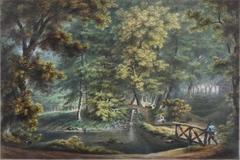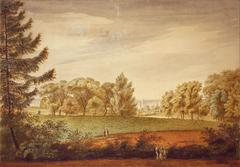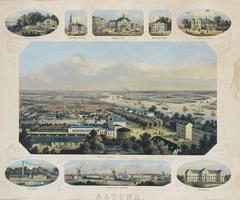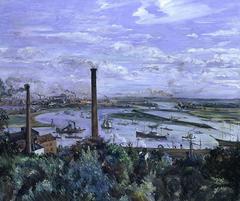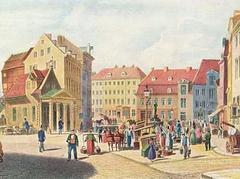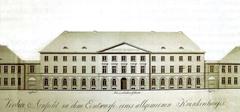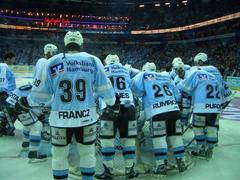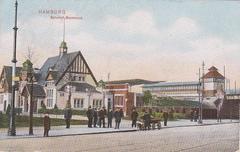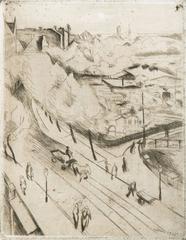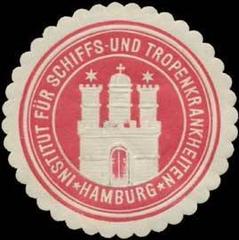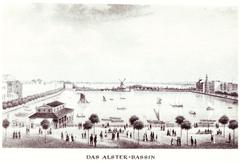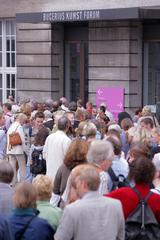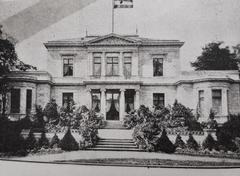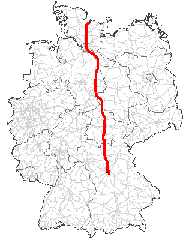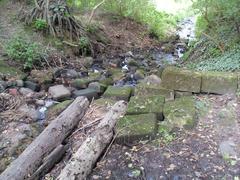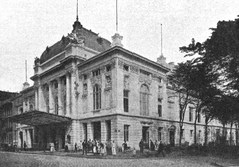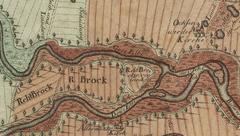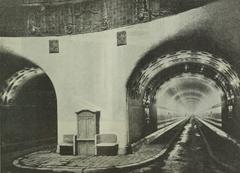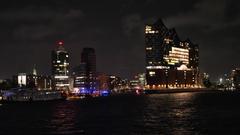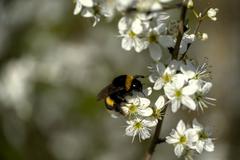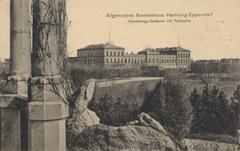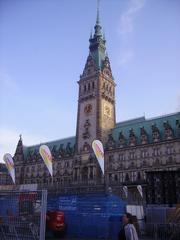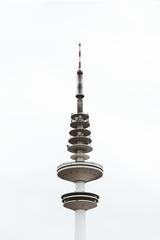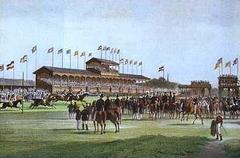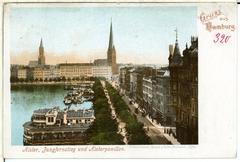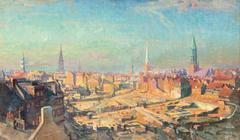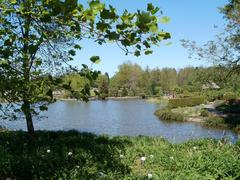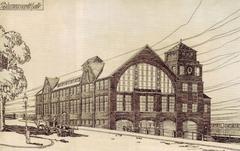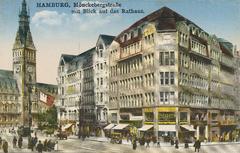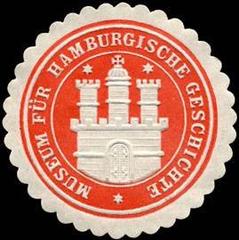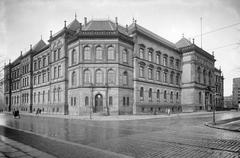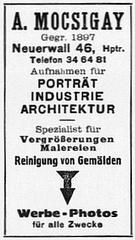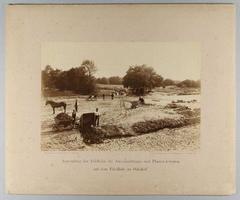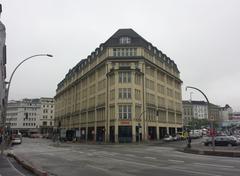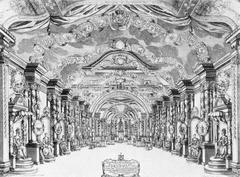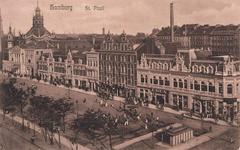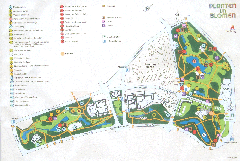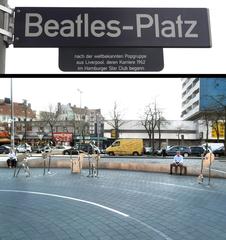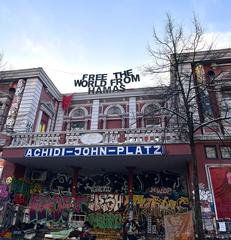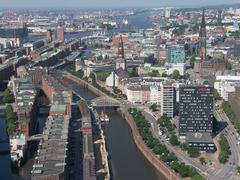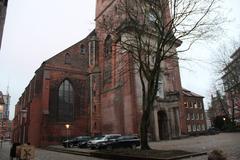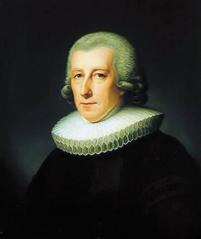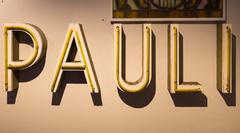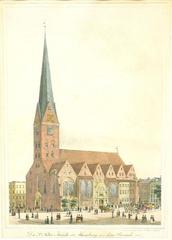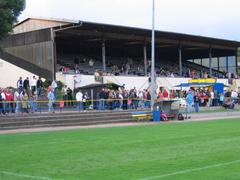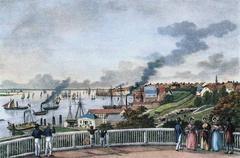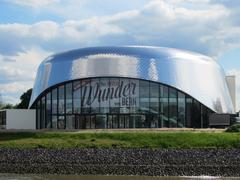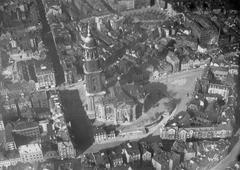
Comprehensive Guide to Visiting Jenisch Park, Hamburg, Germany
Date: 16/08/2024
Introduction
Nestled in the Othmarschen quarter of Hamburg, Germany, Jenisch Park stands as a testament to the city’s dedication to preserving its natural and cultural heritage. As Hamburg’s oldest landscaped park, it seamlessly blends historical significance with natural beauty, making it a must-visit destination for both locals and tourists. The park’s origins date back to the late 18th century when Caspar Voght, a prominent Hamburg merchant, began acquiring land with the vision of creating a model farm that combined aesthetic beauty with agricultural utility (Wikipedia). Over the years, the park underwent significant transformations under the ownership of Martin Johann Jenisch, who redesigned it into an English landscape garden, complete with rolling lawns and strategically placed groves of trees (Hamburg Travel). This guide aims to provide comprehensive information about Jenisch Park, covering its rich history, visiting hours, ticket prices, special events, and much more to help you plan a memorable visit.
Table of Contents
- Introduction
- Origins and Early Development
- Transformation into Jenisch Park
- Public Access and Preservation
- Visiting Hours and Tickets
- Cultural Significance
- Landscape and Natural Features
- Events and Activities
- Travel Tips and Accessibility
- Photographic Spots
- Architectural Highlights
- FAQ
- Conclusion
Explore Jenisch Park: History, Visiting Hours, Tickets, and More
Origins and Early Development
Jenisch Park dates back to the late 18th century when Caspar Voght, a prominent Hamburg merchant and philanthropist, began acquiring land near Flottbek. Between 1785 and 1805, Voght purchased approximately 260 hectares, including what is now Jenisch Park (Wikipedia). Inspired by the English poet William Shenstone’s estate, The Leasowes, Voght aimed to create a landscape combining aesthetic beauty with agricultural utility. Collaborating with landscape gardener James Booth, he envisioned a “Mustergut” (model farm).
Transformation into Jenisch Park
In 1828, Martin Johann Jenisch, a Hamburg senator and wealthy merchant, acquired the estate. He undertook significant redesigns, including building the neoclassical Jenisch House, designed by architects Franz Forsmann and Karl Schinkel. Completed between 1831 and 1834, the house became the park’s centerpiece (Wikipedia). Jenisch transformed the area into an English landscape garden, characterized by naturalistic layouts, rolling lawns, and strategically placed groves of trees (Hamburg Travel).
Public Access and Preservation
The Jenisch family held the park until the early 20th century. In 1927, to prevent its sale and possible conversion into a golf course, the city of Altona leased the park and opened it to the public. In 1937, Altona became part of Hamburg due to the Greater Hamburg Act, and in 1939, Hamburg purchased the park (Wikipedia).
Visiting Hours and Tickets
Jenisch Park is open to the public year-round, and admission is free. The park’s main attractions, Jenisch House and the Ernst Barlach House, have varying opening hours and ticket prices:
- Jenisch House: Open Tuesday to Sunday, 11:00 AM to 6:00 PM. Tickets: Adults €6, Concessions €4.
- Ernst Barlach House: Open Tuesday to Sunday, 11:00 AM to 6:00 PM. Tickets: Adults €5, Concessions €3.
Cultural Significance
Jenisch Park has played a significant role in Hamburg’s cultural landscape. The Jenisch House, now a museum, offers insights into 19th-century upper-class life and Hanseatic architecture. It hosts various exhibitions and cultural events (Wikipedia). The Ernst Barlach House, a museum dedicated to the works of the expressionist sculptor Ernst Barlach, showcases his anti-war sculptures and other works in a serene environment (Time Out).
Landscape and Natural Features
The park’s landscape features rolling green acres, woodland paths, and scenic views of the Elbe River. The Flottbek River flows through the park, enhancing its natural charm. A nature reserve, the Flottbektal, is home to endangered flora and fauna influenced by tidal changes (Hamburg Travel).
Events and Activities
Jenisch Park hosts various events throughout the year, including the Tag des offenen Denkmals, a national event organized by the Deutsche Stiftung Denkmalschutz. This event opens cultural heritage sites to the public, allowing visitors to explore the park’s historical and architectural significance (Wikipedia). The park also offers educational programs and guided tours through the Verein Freunde des Jenischparks (Friends of Jenisch Park), dedicated to the park’s maintenance and restoration (Hamburg Travel).
Travel Tips and Accessibility
Jenisch Park is easily accessible by public transportation:
- Bus: Lines 286 and 115
- Suburban trains: S1 and S11 Visitors can also enter through the neo-baroque Kaisertor on the Elbchaussee, adding to the park’s historical ambiance. The park is wheelchair accessible, and there are facilities for families with young children.
Photographic Spots
Jenisch Park offers numerous picturesque locations perfect for photography. Key spots include the Jenisch House, the scenic views of the Elbe River, and the woodland paths. The changing seasons provide a variety of backdrops, from blooming flowers in spring to vibrant foliage in autumn.
Architectural Highlights
The Jenisch House stands as a prime example of neoclassical architecture, designed as a large cube with a basement, two main floors, and an attic. It features a Doric portico, large windows, and a balcony that opens into the park, symbolizing the connection between architecture and nature. The ground floor contains prestigious salons, the first floor housed living areas, and the attics were designated for servants (Wikipedia).
FAQ
- What are the visiting hours of Jenisch Park? Jenisch Park is open year-round, 24/7.
- Are there guided tours available at Jenisch Park? Yes, guided tours are available through the Verein Freunde des Jenischparks.
- How much are tickets for Jenisch House and Ernst Barlach House? Jenisch House: Adults €6, Concessions €4; Ernst Barlach House: Adults €5, Concessions €3.
- Is Jenisch Park accessible by public transport? Yes, bus lines 286 and 115, and suburban trains S1 and S11.
Conclusion
Jenisch Park’s rich history, cultural significance, and natural beauty make it a unique destination in Hamburg. Its transformation from a model farm to a public park reflects the city’s dedication to preserving its heritage. Whether you’re interested in history, architecture, or simply enjoying a peaceful day in nature, Jenisch Park offers something for everyone.
For more information and updates, download our mobile app Audiala, check out our related posts, or follow us on social media.
References
- Jenisch House, 2024, Wikipedia source url
- Jenischpark, 2024, Wikipedia source url
- Jenischpark, 2024, Hamburg Travel source url
- Visit Jenisch House, 2024, SHMH source url
- Führungen, 2024, Hamburg Tourism source url


